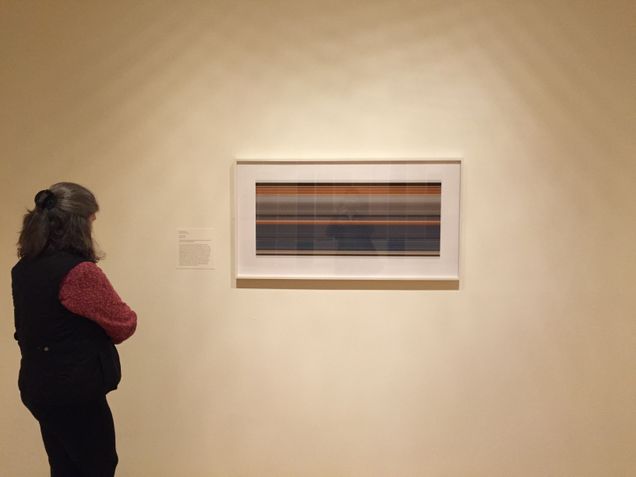This Is a Portrait If I Say So: Identity in American Art, 1912 to Today

This Is a Portrait If I Say So: Identity in American Art, 1912 to Today
Bowdoin College Museum of Art, Brunswick, Maine
June 25, 2016 – October 23, 2016
No faces appeared on the wall of the Bowdoin College Museum of Art’s landmark exhibition, This Is a Portrait If I Say So: Identity in American Art, 1912 to Today. A pioneering exploration of symbolic portraiture in America over the last hundred years, this thoughtfully organized installation re-conceptualized notions of facial likeness with works by preeminent American artists such as Alfred Stieglitz, Jasper Johns, Marcel Duchamp, Glenn Ligon, Roni Horn, Felix Gonzalez-Torres, Jim Dine, and Yoko Ono. Through a chronological arrangement that accentuated art historical moments such as the 1913 Armory Show or 1960s minimalism, This Is a Portrait If I Say So historicized a specifically American method of abstract portraiture.
A portrait is a portrait if the artist says so, at least according to Robert Rauschenberg. His transformative work from which the title of the exhibition was borrowed, “This is a Portrait of Iris Clert if I Say So” (1961), deviates from traditional formats of representation. As a typewritten telegram with a corresponding envelope, Rauschenberg’s piece reshapes our notion of representative American identity. Typeface, yellowed tape, and creased paper characterize Iris Clert, the Greek-born Parisian art dealer. It displaces her face in an entirely symbolic manner, thus emphasizing not the subject, Clert, but the artist, Rauschenberg. In fact, the letter format of “This is a Portrait of Iris Clert if I Say So” supplants the sitter all together. It invokes the viewer as subject—the viewer who would unseal the envelope, unfold the telegram, and read the text. By allowing the museum visitor to adopt the “I” in his title, Rauschenberg (by way of the BCMA curatorial team) invites audience participation, allowing the reception (not just the production) of the portrait to be performative.
Accordingly, what was so successful about this exhibition was its transformation of historical tropes about portraiture. In offering new strategies for understanding physiognomic representation, the three curators—Anne Collins Goodyear, Jonathan Frederick Walz, and Kathleen Merrill Campagnolo—did not contain or categorize abstract American portraiture. Instead, their installation challenged the very status of portraiture itself. Through its layout of multimedia works on walls, floors, and in glass cases, it suggested the defacement of portraiture. It forced the viewer to look for a face in non-facial images. Ultimately, This Is a Portrait asked more questions than it answered, inspiring a belated discussion of non-mimetic portraits and their histories, thus filling a long-held lacuna in the history of art.
This highly cerebral investigation was not only suitable for an age dominated by the “selfie” and mediated through various social platforms, it was most necessary. This Is a Portrait If I Say So reminded us that American identity is not always painstakingly staged or perfectly illustrated, but can be as blurred as Tom Friedman’s untitled self-portrait from 1998. Even so, this exhibition presented a limited selection of American identity that failed to represent enough of the population (the magnificent catalog balances this discrepancy). Of the fifty-three works in the show, only eleven were by women artists. But perhaps this patriarchal prejudice reveals more about the historiography of American portraiture then it does about this pioneering exhibition.